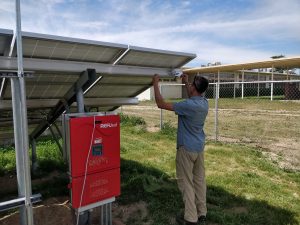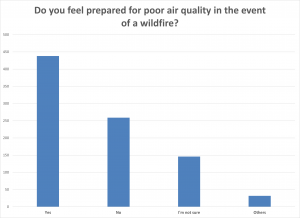Please contact [email protected] with any questions regarding the Community Air Protection Program.
Background
Recent legislation (AB 617) directed the California Air Resources Board (CARB) to establish the Community Air Protection Program to reduce exposure in communities most affected by air pollution. The goal is to prioritize air quality improvements in California’s most polluted communities through enhanced monitoring and targeted deployment of cleaner technologies, with expanded community participation.
For more information on projects, please see here.
- Identify the most heavily affected communities in California. CARB is in charge of identifying the disadvantaged communities, and the most recent list of communities can be found here.
- Community selection is based on data from a statewide screening tool (CalEnviroScreen), low-income areas, public outreach, and other data sets and tools. Communities can also nominate themselves.
- These communities may deploy additional community-level air monitoring or adopt community-specific emission reduction plans to improve the local air quality.
- For many regions, including Santa Barbara County, provide funding to replace dirtier diesel engines and equipment with cleaner ones.
- Implement new state emissions reporting system for criteria pollutants (such as ozone and particulate matter) and air toxics.
- Encourage installation of more pollution controls at industrial facilities.
- Increase penalties for polluters.
- Conduct community outreach in several regions in Santa Barbara County.
- Talk with affected communities to identify eligible grant project types.
- Share project types with District Board of Directors.
- Forward projects to CARB to allocate funding. The funding allocation from CARB is for diesel emissions reduction projects.
- Implement grant projects to improve air quality in affected communities.
- Work with CARB to efficiently implement a statewide emission inventory reporting system.
- Participate in a working group to develop a technology clearinghouse and to identify BARCT (Best Available Retrofit Control Technology) standards. These control technologies can greatly reduce emissions from engines and equipment. Revisions to District rules may also be necessary to meet the BARCT standards.
View infographic below for more on harmful effects of diesel emissions.
CARB developed the “Regulation for the Reporting of Criteria Air Pollutants and Toxic Air Contaminants” (or CTR) to implement statewide annual reporting of criteria air pollutant and toxic air contaminant emissions data from all facilities. Emissions inventory data is critical to understanding the sources of emissions that may contribute to adverse health risks or other impacts at the local, regional, and statewide level. The District maintains a thorough emission inventory, but additional modifications will be necessary to support the new statewide structure and to reliably compare the emission inventory between Air Districts.
AB 617 requires each air district to adopt an expedited rule development schedule for the implementation of best available retrofit control technology (BARCT) at each industrial source subject to the California GHG Cap-and-Trade program. On December 20, 2018, the Board of Directors adopted the AB 617 BARCT Rule Development Schedule. This rule development schedule allows the District to perform rule development proceedings to see if additional emission reductions can be feasibly attained at the six Industrial Sources within Santa Barbara County.
Board Materials: Board Package, Board Presentation, Rule Development Schedule
District’s Rule Development Webpages: Link
CARB’s Expedited BARCT webpage: Link
Funds are available from CARB for community-based organizations for technical assistance and projects that align with the goals of AB 617. Examples of what Community Air Grants are being used to fund includes, but is not limited to:
- Community engagement and outreach related to AB 617
- Hiring consultants and/or technical experts
- Travel and logistical support for hosting and/or attending meetings related to AB 617 (i.e., room rental, meeting facilitation, transportation)
- Support for community operated air monitoring
- Data collection and analysis, including community based participatory research projects
For more information regarding these grants, please see here.
Local Community Air Grants: Santa Ynez Band of Chumash Indians: Chumash Community Air Monitoring Network
This project will serve the Santa Ynez Chumash Reservation in Santa Barbara County. The Chumash Community Air Quality Monitoring Project will help improve air quality on the Reservation. This goal will be achieved through the establishment of a real-time monitoring network, strategic air quality sampling, community engagement and education, and tribal capacity building.
Air District: Santa Barbara County Air Pollution Control District
Amount Requested: $177,101.00
AB 1550 areas are those shaded in blue. For a more detailed map, please click here.
CalEnviroScreen (CES) is a screening methodology that can be used to help identify California communities that are disproportionately burdened by multiple sources of pollution and with population characteristics that make them more sensitive to pollution. The Office of Environmental Health Hazard Assessment (OEHHA) periodically releases updates to the screening tool. The most recent version, CES 4.0, was released in October 2021, and the map of the results for Santa Barbara County is shown below. For more information on CES 4.0, please see here.

Available upon request.











